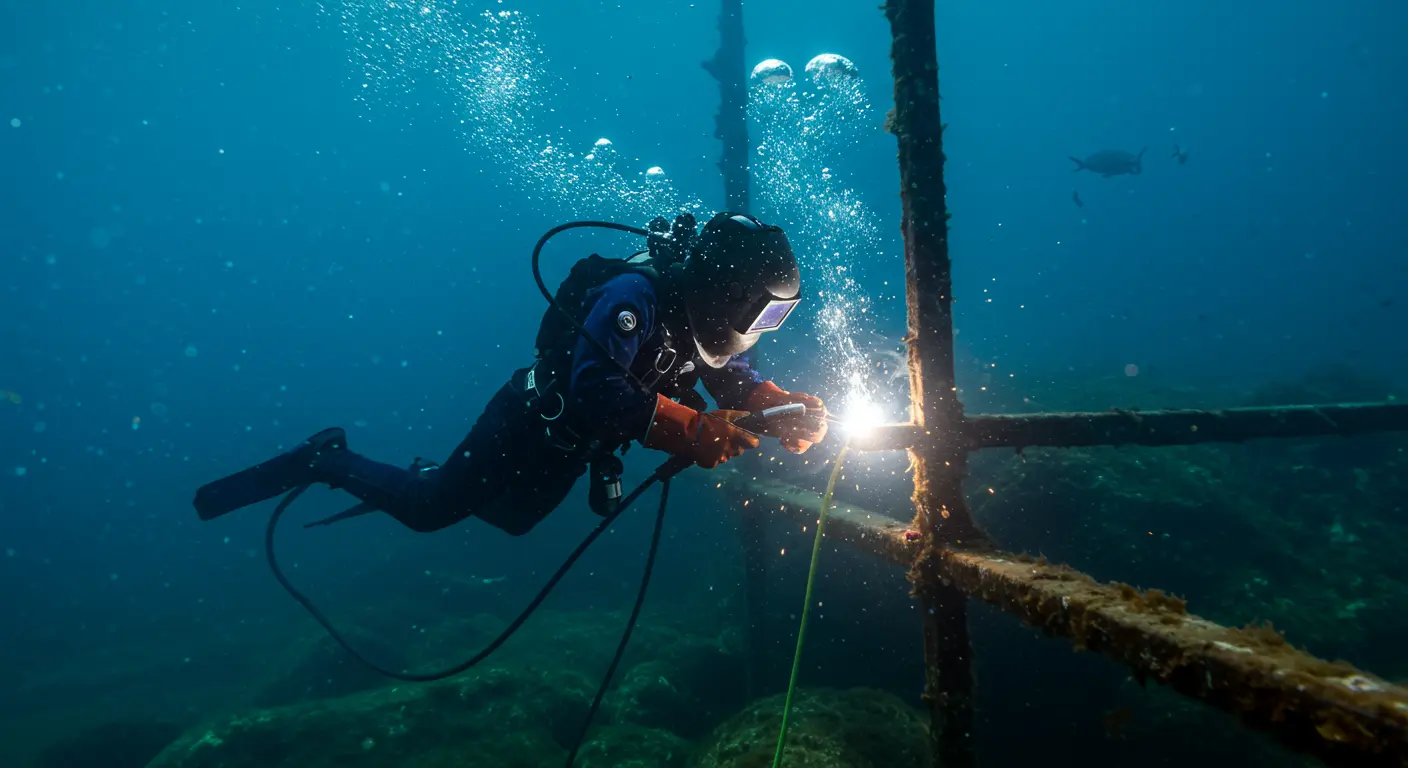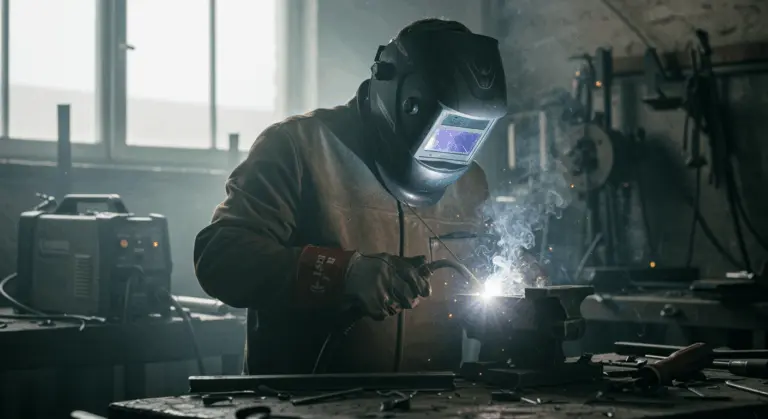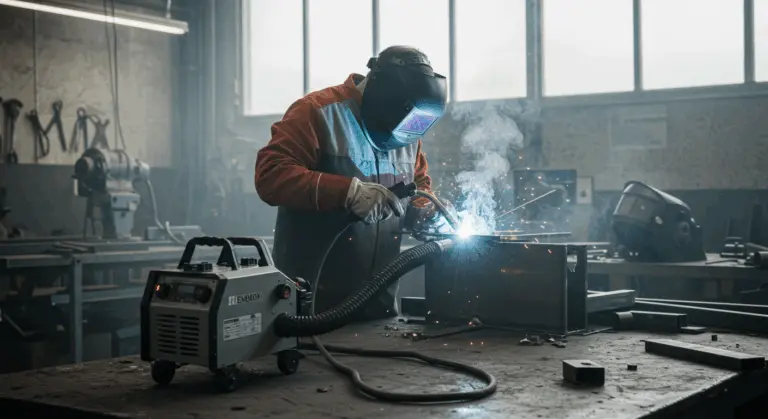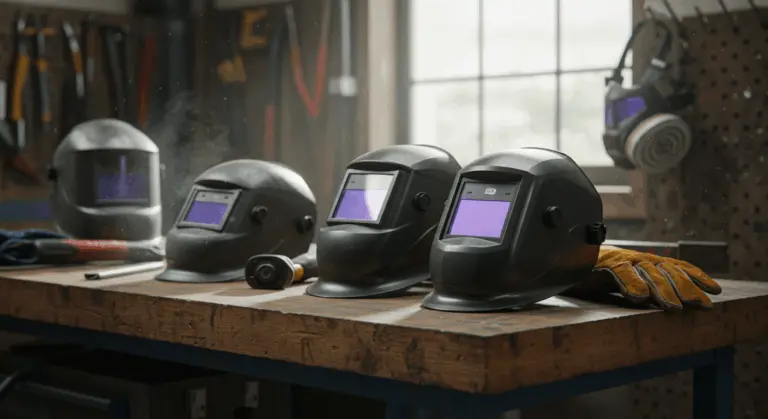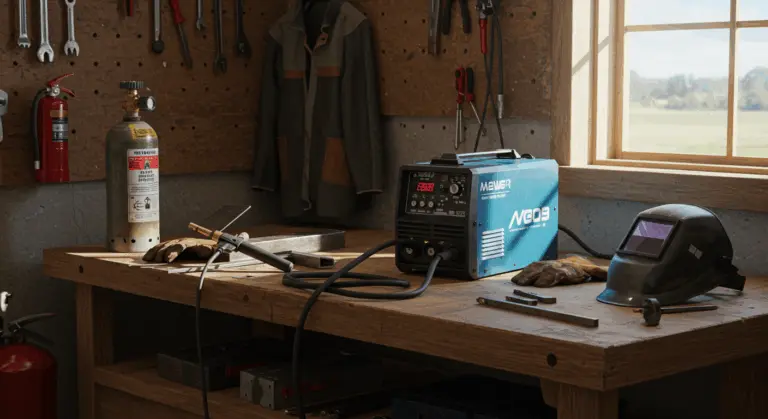Overview of Underwater Welding and Its Risks
Underwater welding represents one of the most perilous professions in the maritime world. It merges the inherent dangers of diving with the complexities of welding in unforgiving conditions. This specialized craft demands working beneath the water’s surface—on offshore oil rigs, ship hulls, and submerged pipelines.
With a staggering fatality rate of roughly 15%—more than 100 times higher than logging—this profession operates in a harsh underwater environment where the smallest error can prove lethal.
-
Drowning: The most immediate threat, often caused by equipment malfunction, entanglement, or disorientation.
-
Electrical Shock: A constant danger from using high-voltage equipment in a conductive water environment.
-
Explosions: The welding process generates flammable gases (hydrogen and oxygen) that can become trapped and ignite.
-
Extreme Environmental Conditions: Welders face immense physical strain from high pressure, cold temperatures, darkness, and strong currents.
-
Marine Life: Unpredictable encounters with marine animals pose an additional threat.
Understanding the Underwater Welding Death Rate
This high fatality rate stems from a dangerous combination of hazards. Workers must navigate electrical equipment in water while simultaneously managing the complex physiological demands of deep-sea diving.
Drowning and decompression sickness dominate the casualty statistics. The combination of pressure changes and complex welding demands creates an environment where multiple hazards are always present.
Key Causes of Fatalities in Underwater Welding
Drowning claims more lives than any other hazard. Equipment failures—particularly breathing apparatus malfunctions—entanglement in debris, or compromised decision-making under extreme stress can all lead to fatal outcomes in the challenging underwater environment.
Electric shock presents a constant, deadly threat. When equipment fails or insulation breaks down, dangerous currents can pass through a welder’s body—a risk greatly increased by water’s exceptional conductivity.
Decompression sickness—infamously dubbed ‘the bends’—strikes when divers surface too rapidly. Nitrogen bubbles form violently in bloodstream and tissues.
Hypothermia emerges as a silent killer, especially in frigid waters. Prolonged exposure impairs cognitive function and physical coordination, potentially triggering fatal errors or paralyzing emergency responses.
Explosions represent perhaps the most terrifying risk. Hydrogen and oxygen gases generated by welding arcs can accumulate in confined underwater spaces, creating explosive conditions that can ignite from a single spark.
Safety Measures to Reduce Risks in Underwater Welding
-
Equipment Maintenance: Regular inspection and testing of all diving and welding gear are essential for preventing catastrophic failures.
-
Clear Communication: Constant contact between the welder and the surface support team is crucial for monitoring and rapid emergency response.
-
Pre-Dive Environmental Assessment: Evaluating conditions like currents, visibility, and marine life helps mitigate site-specific hazards.
-
Strict Decompression Protocols: Adherence to dive tables and planned decompression stops is vital to prevent ‘the bends,’ with on-site decompression chambers for emergencies.
-
Team-Based Operations: Using a buddy system and having a dedicated surface support team ensures no welder works alone, and that help is always ready.
Training and Certification for Underwater Welders
-
1. Surface Welding Mastery: Candidates must first become certified welders on dry land, mastering various techniques and safety protocols.
-
2. Commercial Dive Training: The next step is completing an accredited commercial diving program to learn essential skills like dive physics, safety procedures, and emergency management.
-
3. Specialized Underwater Welding Courses: Finally, welders integrate these skills in specialized programs that teach the unique techniques and safety considerations for working in aquatic environments.
Physical fitness requirements are strict. Candidates must demonstrate swimming proficiency (typically 400 meters unassisted) and pass rigorous medical evaluations to prove they can handle high pressures, strong currents, and the profession’s intense physical demands.
Ongoing education is critical for safety. Welders must regularly complete refresher training to stay current with new technologies, evolving safety protocols, and advanced welding techniques.
Long-Term Health Impacts of Underwater Welding
Beyond immediate life-threatening dangers, underwater welding causes serious long-term health problems that can significantly reduce life expectancy. Alarming reports suggest underwater welders may live only 35-40 years—a sobering testament to this profession’s cumulative toll on human health.
-
Respiratory Conditions: Long-term exposure to toxic fumes can lead to chronic bronchitis, occupational asthma, and other lung diseases.
-
Musculoskeletal Damage: Working against water resistance and in awkward positions causes chronic joint pain and other physical injuries.
-
Neurological Damage: Repeated exposure to high pressure and potential instances of decompression sickness can result in cumulative brain and nervous system damage.
-
Psychological Strain: The constant stress, isolation, and high-risk nature of the job contribute to anxiety, depression, and PTSD.
-
Hearing Loss: The combination of loud equipment and pressure changes can cause permanent hearing damage.
Underwater welding stands among the world’s most lethal occupations, with its 15% fatality rate reflecting a combination of serious hazards. Drowning, electrocution, explosions, and decompression sickness create risks that few other professions face.
While the industry has improved safety through rigorous training, comprehensive certification, and enhanced protocols, the fundamental reality remains unchanged. Combining diving with welding creates inherent dangers that no amount of preparation can entirely eliminate.
Prospective welders face a stark calculation: weighing immediate life-threatening risks and long-term health damage—including potentially shortened lifespans—against substantial compensation and the allure of extreme professional challenges.
Future technological advances may significantly reduce human risk exposure. Remotely operated welding systems and sophisticated automation could eventually replace human divers in the most perilous scenarios.
Underwater welding will likely never be truly safe—but continued improvements in safety practices and technology offer hope for reducing its alarming mortality rates. For those called to this extreme career path, unwavering commitment to safety isn’t just professional—it’s literally a matter of life and death.

